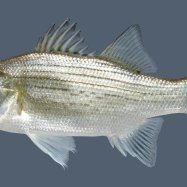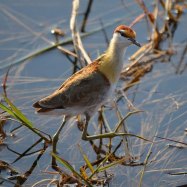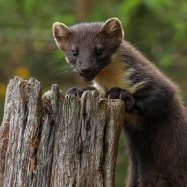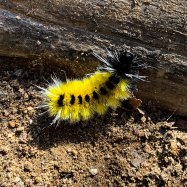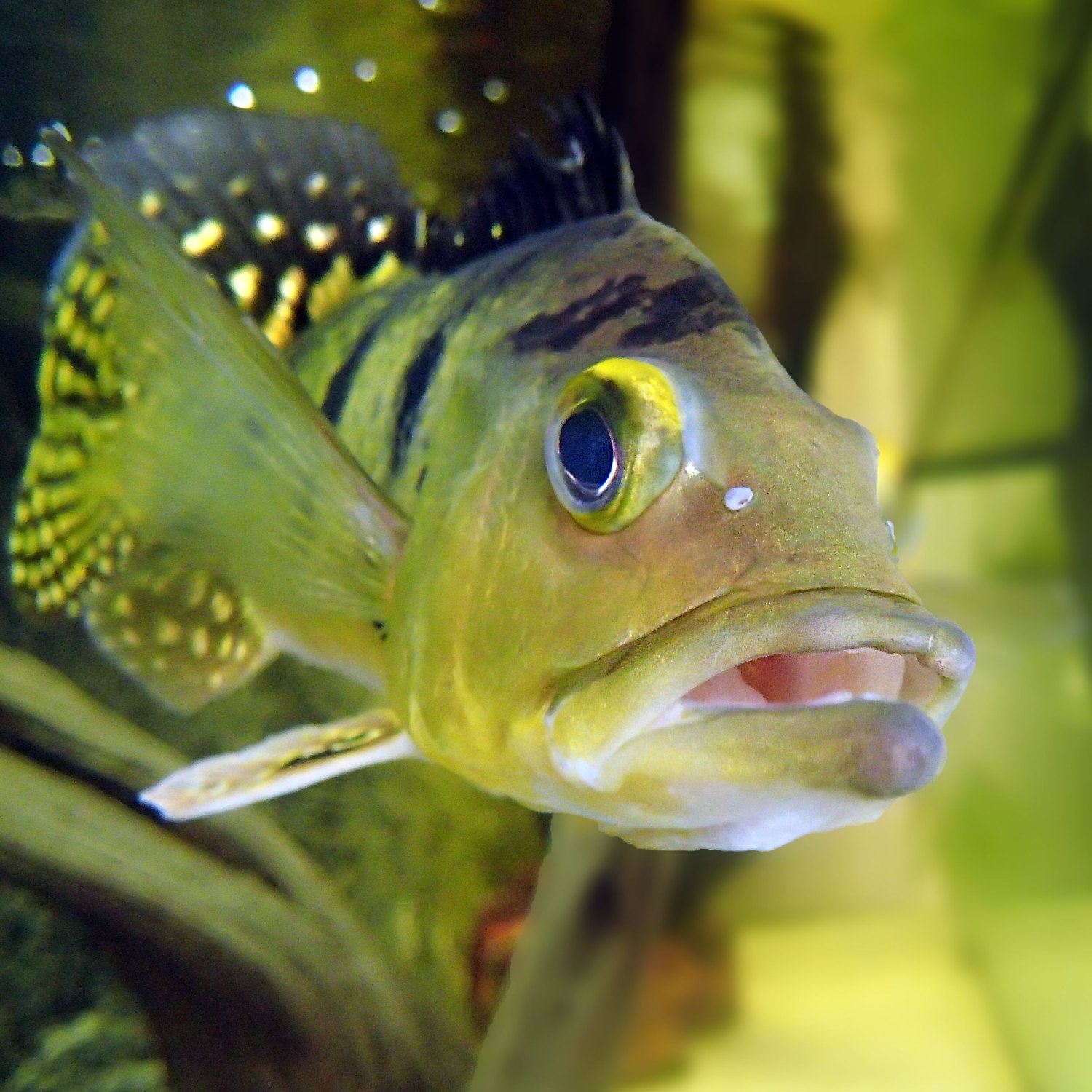
Peacock Bass
Up to 30 inches (76 cm)
The Peacock Bass is a stunning fish found in tropical regions, with a maximum length of up to 30 inches. Part of the Cichlidae family, its deep-bodied and compressed shape makes it a strong swimmer. Keep an eye out for this beautiful creature during your next visit to a tropical destination! #AnimalFacts #PeacockBass #TropicalFish #Cichlidae.
Animal Details Summary:
Common Name: Peacock Bass
Kingdom: Animalia
Habitat: Freshwater, rivers, lakes, flooded forests
The Magnificent Peacock Bass: A Vibrant and Powerful Amazonian Predator
The Amazon Rainforest is not only known for its diverse and rich plant life, but also for its rich and diverse animal life. Among the many fascinating creatures that call the Amazon their home, there is one that stands out for its striking beauty and powerful hunting abilities- the Peacock Bass.Scientifically known as Cichla ocellaris and commonly referred to as simply Peacock Bass, this fish is a true marvel of nature. From its vibrant colors to its impressive size, this fish is a sight to behold Peacock Bass. So let's dive deeper into the world of the Peacock Bass and discover what makes it such a fascinating creature.
The Anatomy and Physical Features of Peacock Bass
At first glance, the Peacock Bass is a strikingly beautiful fish that is hard to miss. Its body is adorned with vibrant shades of green, blue, and orange, making it stand out in its natural habitat. Its body shape is deep-bodied and laterally compressed, allowing it to effortlessly glide through the water. These physical features, coupled with its impressive size of up to 30 inches (76 cm), make the Peacock Bass a formidable predator in the Amazonian waters.Interestingly, the coloration of these fish varies depending on their habitat. Those living in clear waters tend to have a brighter and more vibrant coloration compared to those living in murky waters. This is believed to be an adaptation to blend in with their surroundings and improve their chances of catching prey.
The Hunting Habits of Peacock Bass
As a carnivorous species, the Peacock Bass feeds on a variety of smaller fish, crustaceans, and insects Pine Snake. They are known for their powerful jaws and sharp teeth, which make them efficient predators in the water. They can be quite aggressive when it comes to hunting, often chasing down their prey before striking with lightning fast speed.One interesting aspect of their hunting habits is their ability to spit water at insects and other prey above the water's surface. This is a clever adaptation that allows them to catch prey that may be out of their reach in the water.
The Native Habitat and Geography of Peacock Bass
As the name suggests, the Peacock Bass is primarily found in South America, specifically in the Amazon River Basin. It is native to countries like Brazil, Suriname, and Guyana, but has also been introduced to other countries like Malaysia and Hawaii for sport fishing purposes.In its natural habitat, the Peacock Bass can be found in various freshwater environments, such as rivers, lakes, and flooded forests. It is often found near riverbanks and in areas with plenty of vegetation, as these provide hiding places for their prey.
The Role of Peacock Bass in the Ecosystem
As a top predator in its ecosystem, the Peacock Bass plays a crucial role in maintaining the balance of the food chain. Their diet primarily consists of smaller fish, which helps control their populations and prevent overpopulation. This, in turn, protects other species of fish and maintains the overall health of the ecosystem.Moreover, Peacock Bass is also a popular target for sport fishing, which contributes to the local economy and provides an incentive for local communities to preserve their natural habitats. However, it is essential to regulate fishing activities to ensure their populations don't decline.
The Threats Facing Peacock Bass and Conservation Efforts
Like many other species in the Amazon, Peacock Bass is facing threats to its survival due to deforestation and pollution. As the Amazon Rainforest continues to shrink, there is less suitable habitat available for these fish, and their populations are declining as a result.To combat this, conservation efforts are underway to protect their natural habitats and promote sustainable fishing practices. For example, the Amazon Conservation Association works to protect the Amazon River Basin and its wildlife, including the Peacock Bass. These efforts are crucial in ensuring the survival of this majestic fish and preserving the delicate ecological balance of the Amazon.
Why We Should Appreciate and Protect Peacock Bass
Peacock Bass is more than just a stunningly beautiful fish; it is an important part of the Amazon Rainforest ecosystem. Its impressive physical features and hunting abilities make it a top predator, contributing to the balance of the food chain. Furthermore, it is highly valued for sport fishing, which brings economic benefits to local communities.However, the survival of Peacock Bass is increasingly threatened, primarily due to human activities like deforestation and pollution. It is our responsibility to appreciate and protect the Peacock Bass and its natural habitat to ensure its survival for generations to come.
The Marvels of Nature: A True Beauty in the Amazonian Waters
In conclusion, the Peacock Bass is a remarkable creature that deserves our appreciation and protection. Its vibrant colors, powerful hunting abilities, and crucial role in the ecosystem make it a truly unique and magnificent fish. As we continue to learn more about the wonders of the Amazon Rainforest, let us not forget to preserve and protect its diverse and fascinating animal life. And the Peacock Bass, with all its splendor and might, is an integral part of this rich ecosystem.

Peacock Bass
Animal Details Peacock Bass - Scientific Name: Cichla ocellaris
- Category: Animals P
- Scientific Name: Cichla ocellaris
- Common Name: Peacock Bass
- Kingdom: Animalia
- Phylum: Chordata
- Class: Actinopterygii
- Order: Perciformes
- Family: Cichlidae
- Habitat: Freshwater, rivers, lakes, flooded forests
- Feeding Method: Carnivorous
- Geographical Distribution: South America, specifically the Amazon River Basin
- Country of Origin: Brazil
- Location: Tropical regions
- Animal Coloration: Vibrant green, blue, and orange
- Body Shape: Deep-bodied and laterally compressed
- Length: Up to 30 inches (76 cm)
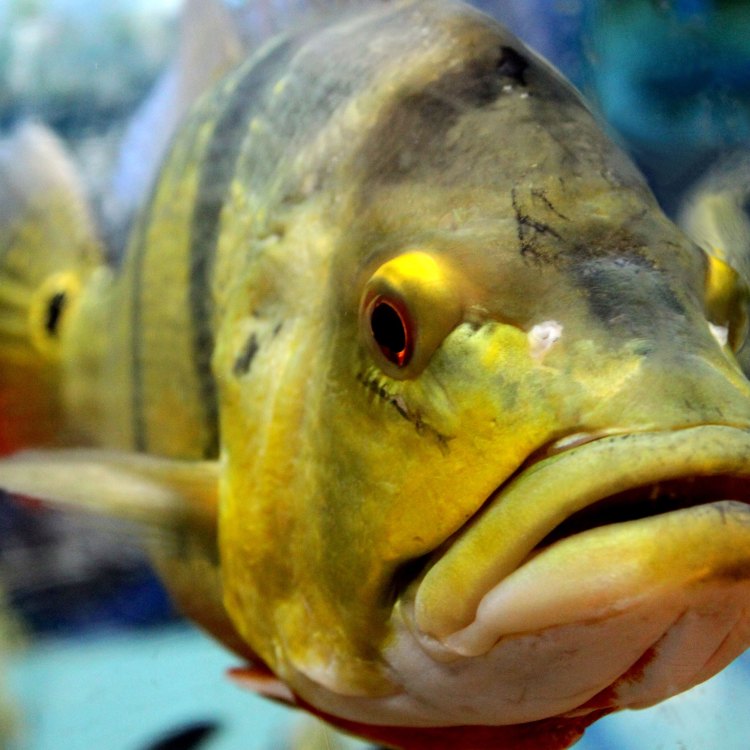
Peacock Bass
- Adult Size: 20-30 inches (50-76 cm)
- Average Lifespan: 10-15 years
- Reproduction: Sexual
- Reproductive Behavior: Builds nests, males guard eggs and fry
- Sound or Call: Produces grunting sounds
- Migration Pattern: Non-migratory
- Social Groups: Solitary or in small groups
- Behavior: Aggressive and territorial
- Threats: Habitat loss, overfishing
- Conservation Status: Not evaluated
- Impact on Ecosystem: Top predator, helps control fish population
- Human Use: Popular sport fish
- Distinctive Features: Elongated dorsal fin, striking coloration
- Interesting Facts: Not closely related to true bass species, introduced to other regions for sport fishing
- Predator: Predatory birds, larger fish
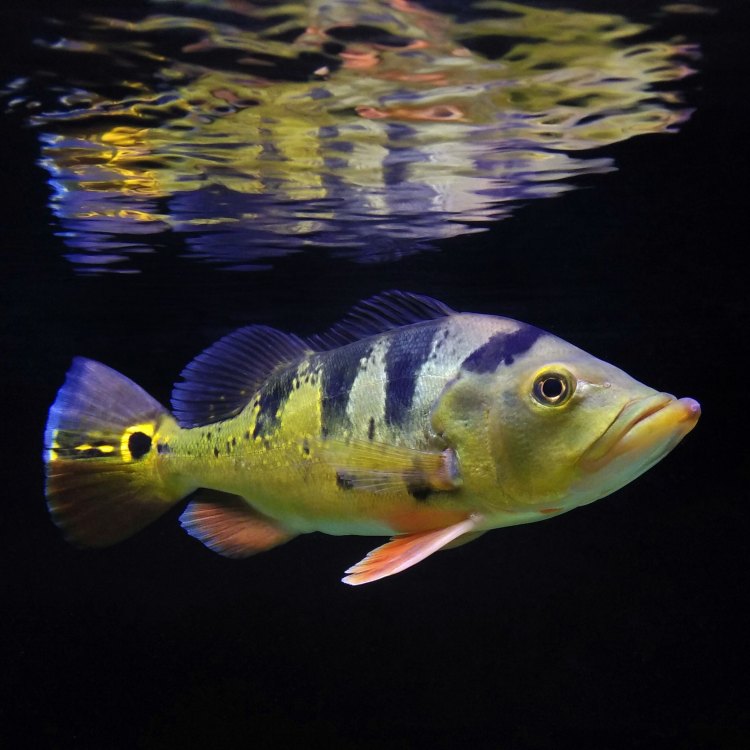
Cichla ocellaris
The Mighty Peacock Bass: A Fascinating Fish with Impressive Features
As soon as you hear the word "bass," you might conjure up images of a typical freshwater fish with a slightly elongated body, found in abundance in lakes and rivers. However, have you ever heard of the Peacock Bass? This strikingly beautiful fish is not just any ordinary bass species; it is a unique and fascinating fish that is sure to capture your attention.The Peacock Bass, scientifically known as Cichla, is a tropical freshwater fish species found in the Amazon basin, particularly in Brazil, Colombia, and Venezuela. It is also found in other countries, including Panama, Costa Rica, and even in the United States, where it was introduced for sport fishing PeaceOfAnimals.Com. This popular sportfish has become a favorite among anglers, not just for its challenging fight but also for its remarkable features.
With an adult size of 20-30 inches (50-76 cm) and an average lifespan of 10-15 years, the Peacock Bass may not be the biggest fish you've ever heard of, but don't let its size deceive you. This fish is a powerful predator with distinctive features and many interesting facts that you might not know.
Distinctive Features of the Peacock Bass
The first thing that catches the eye about the Peacock Bass is its striking coloration. As its name suggests, this fish features an array of vibrant colors, similar to that of its feathered counterpart, the peacock. Its body is adorned with shades of green, gold, orange, and blue, with a beautiful iridescent sheen that changes depending on the angle of light.But the most distinctive feature of the Peacock Bass is its elongated dorsal fin, which sets it apart from other bass species. This fin stretches almost the entire length of its body and is often used to identify its different sub-species. Some sub-species of the Peacock Bass also have a second, smaller dorsal fin near the tail, adding to its unique appearance Possum.
The shape of its body is also quite different from other bass species. The Peacock Bass has a more compressed body, giving it a sleeker and more streamlined look. This helps it to maneuver through the dense vegetation of the Amazon basin, where it resides.
Reproductive Behavior of the Peacock Bass
The Peacock Bass is a sexual species, with males and females reproducing through fertilization. During breeding season, which typically takes place during the rainy season from October to December, males build nests in shallow waters by clearing the ground and creating a circular shallow depression.Once the nest is built, the male attracts females by producing grunting sounds using a unique set of muscles in their swim bladder. The female then lays her eggs in the nest, which can range from a few hundred to thousands, depending on the size of the female. After laying her eggs, the male fertilizes them and guards them fiercely until they hatch, typically within a week.
Once the fry (baby fish) hatch, the male continues to care for them, protecting them from predators and ensuring they have enough food. This parental behavior is not common among bass species and is one of the many interesting facts about the Peacock Bass.
Behavior of the Peacock Bass
If you're planning to go fishing for Peacock Bass, be prepared for an aggressive fight. These fish are known for their aggression and territorial behavior. They will fiercely protect their territory and can sometimes even be seen chasing away other fish species or even humans.The Peacock Bass is also a solitary fish, but it can occasionally be found in small groups. This behavior is often seen during breeding season when males congregate in certain areas to build their nests. However, they are mostly non-migratory, staying in their preferred territories and rarely straying too far.
Threats and Conservation Status
The Peacock Bass is currently listed as "Not Evaluated" by the International Union for Conservation of Nature (IUCN) Red List, which means that its conservation status is still uncertain. However, like most fish species, it is facing threats due to habitat loss and overfishing.The Amazon basin, the natural habitat of the Peacock Bass, is under threat from deforestation, which leads to water pollution and changes in water temperature and pH levels. This can have a significant impact on the survival of the Peacock Bass, as well as other aquatic species.
Overfishing is another threat to the Peacock Bass, especially in areas where it is a popular sportfish. While recreational fishing is not harmful to the species, commercial exploitation and illegal fishing can have detrimental effects on its population and the ecosystem as a whole.
Impact on Ecosystem
As a top predator in the Amazon basin, the Peacock Bass plays a significant role in controlling the fish population. Its ferocious appetite and predatory behavior keep other fish species in check, preventing overpopulation and maintaining a healthy ecosystem.The Peacock Bass also helps in maintaining the balance of the food chain, as it feeds on smaller fish and is, in turn, preyed upon by larger fish and predatory birds. This intricate web of predator-prey relationships is crucial for the survival of all species in the Amazon basin.
Human Use and Introduction to Other Regions
The Peacock Bass is a popular sportfish, known for its fighting abilities and striking appearance. Fishing for this species has become a popular activity in the Amazon basin, as well as in other regions where it has been introduced, such as Florida in the United States.In the 1980s, Peacock Bass was introduced to the canals and lakes of Florida by the state's fish and wildlife agency. The purpose was to control the population of exotic species and to offer anglers a new and exciting fishing experience. Today, the Peacock Bass has become a highly sought-after catch, drawing in tourists and fishing enthusiasts from all over the world.
Predators of the Peacock Bass
While the Peacock Bass may be a fierce predator, it is not immune to danger. As mentioned earlier, this fish is preyed upon by larger fish and predatory birds. Larger fish such as Piranhas, Arowanas, and Catfish all pose a threat to the Peacock Bass, especially when they are still young and vulnerable.Predatory birds, such as Herons and Egrets, are also known to feed on small Peacock Bass, especially when they are near the water's surface. Therefore, it is crucial for the survival of the species to have a healthy population and maintain a balance in the ecosystem.
Conclusion
The Peacock Bass is undoubtedly a fascinating species with impressive features and a remarkable reproductive behavior, making it stand out among other bass species. Its striking coloration and elongated dorsal fin make it a favorite among anglers, while its role as a top predator helps maintain the delicate balance of the Amazon basin's ecosystem.As this fish becomes increasingly popular, it is crucial to ensure its conservation and protection to prevent any adverse effects on its population and the ecosystem as a whole. So, the next time you're out fishing in the Amazon or Florida, keep an eye out for the magnificent Peacock Bass, and appreciate its beauty and importance in the aquatic world.
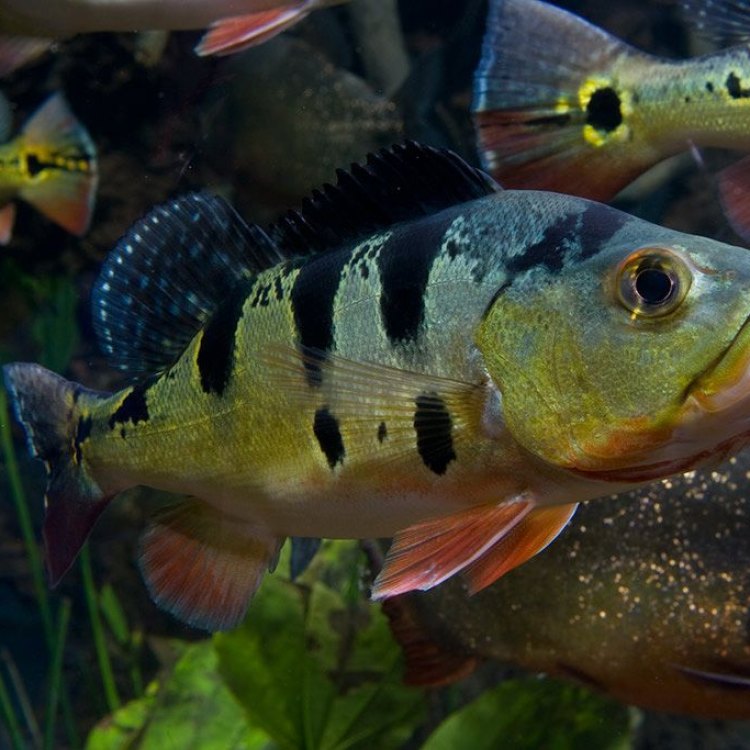
The Magnificent Peacock Bass: A Vibrant and Powerful Amazonian Predator
Disclaimer: The content provided is for informational purposes only. We cannot guarantee the accuracy of the information on this page 100%. All information provided here may change without prior notice.


